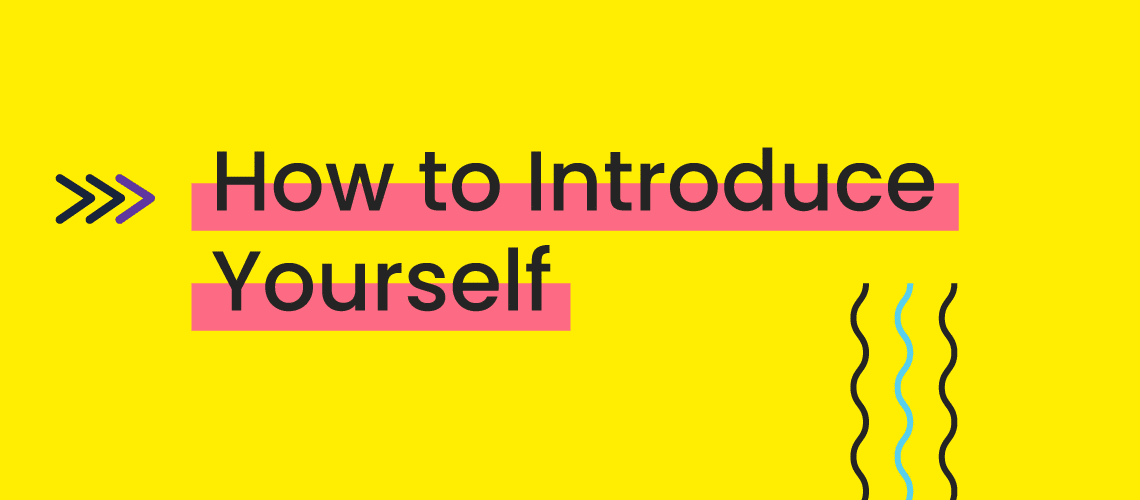
Introducing yourself and others online
It was inevitable.
After the workspace transition cocooned us in our homes, reducing human contact, some of us lost our interpersonal touch.
We had to resort to communication using our version of modern technologies: reliving our ICQ days over Slack, sighing in collective frustration at Zoom, and taking over every square inch of social media to impart everything from personal branding to marketing schemes.
Introducing ourselves over the internet became standard. For some, it lessened the pressure to perform, but for others, it became more difficult to express themselves or convey tone.
Communication has evolved over time, tethered to the past by its basic purpose, and remaining essential in the future regardless of its manifestation.
While the written word is meant to deliver a point, express oneself, determine answers, or negotiate, it has always been forced to carry the weight of conveying personality and tone.
First impressions are dictated by the tone – or vibe – and knowing how to write an introduction is crucial to setting it.
How do I introduce people in an email?
There’s a difference between writing an introduction about yourself and others by email. One involves sharing a bit of personal information, and the other is a way to show respect and acknowledge each other.
How you write an email introducing yourself or others could affect the reader’s perception. That’s why it’s important to remember these few tips:
1. Write it out…
Instead of “Zina, meet Rina,” formalize it a little by writing it out and giving background.
For example:
Zina, I’d like to introduce you to Rina, my former colleague at [company]. We worked together on the Flexus project where she led the SK initiative. She’s fantastic to work with.
2.…but keep it simple.
Make the email introduction straightforward and to the point, without going into excessive detail or making it too lengthy. The goal is to get the introduction across efficiently, while still being professional and polite, such as shown above.
3. Be professional and respectful.
Depending on the situation, use proper language, address the recipient by their name or professional title, and avoid overly casual language.
For example, a more formal or professional introduction would be:
Dear Mr. Johnson,
I hope this email finds you well. I would like to introduce you to Ms. Patel, our new Marketing Manager. She brings with her a wealth of experience in marketing strategies and branding.
Ms. Patel, Dave Johnson is our VP of Product. He’s been a strong leader for the team and keeps us on task.
The two of you may take it from here.
A more casual introduction example would be:
Hi Dave,
I’d like to introduce you to Maggie Patel, our new Marketing Manager. She has tons of experience and has the portfolio to prove her branding talent.
Maggie, Dave is our VP of Product and is great to work with. I’m sure you’ll hit it off.
Feel free to take it from here!
4. Emphasize relevance and mutual interests.
Include relevant information that highlights why you are making the introduction and what you both have in common.
For example:
Hi Jane,
I’d like to introduce you to Zane, a fellow developer and founder of a non-profit organization dedicated to promoting youth in hi-tech. I believe you two could potentially collaborate on the Ficus project.
Immediately, it’s clear as to why these people are being introduced as we get their name, position and/or title, what their organization does, and the reason why they’re being introduced.
How do I write an introduction about myself?
Writing an introduction about yourself can be easy if you know the right balance between being personable and oversharing.
If you’re introducing yourself over email in a work setting, the key is to convey the right tone and make a positive first impression.
Here’s an example of how to introduce yourself over email in a work setting:
Hi everyone,
It’s a pleasure to meet you! My name is Sandy, and I'm joining the R&D team as a QA tester.
I have 4 years of experience in quality assurance, and am looking forward to bringing my perspective to the team and learning new skills from you along the way.
In my personal life, I enjoy beach trips with my husband and 3-year-old son, and testing my baking skills (perhaps you could be my taste-testers).
I’m looking forward to finally meeting each of you in person, and am excited for what we’ll accomplish together.
Best regards,
Sandy
This email introduction is professional, friendly, and concise. It provides important information about your background and skills, while also expressing a desire to get to know the recipients and work together.
By making this introduction, you're helping to establish your presence within the company and build relationships with your colleagues.
Why is it important to learn how to introduce yourself or make an email introduction?
Learning how to introduce yourself or others is important for several reasons:
Making a good first impression
Introducing yourself or others is often the first point of contact with someone, and making a good first impression is crucial. A well-written, friendly, and professional introduction can create a positive image of you and the person you're introducing, setting the tone for future interactions.
Building relationships
Introducing people is a way to facilitate relationships and create connections. A well-crafted introduction can help establish trust and build rapport, making it easier for both parties to work together or collaborate in the future.
Conveying information
An introduction is an opportunity to share important information about yourself or others, such as background, skills, and achievements. This information can help the recipient understand your professional and personal context, and assess your relevance to them.
Improving communication skills
Writing effective introductions requires clear, concise, and professional language. By practicing this skill, you can improve your overall communication abilities and enhance your reputation as a professional and as a person.
Building your social skills by learning how to introduce yourself
In short, despite perceived setbacks that reduce one’s ability to socialize, introducing yourself or others is a critical part of professional communication and can help you build relationships, convey information, and make a positive impact on those you communicate with.
Whatever social graces we lost from the advent of the internet, global events, or trends, know that they can quickly be recovered with a little practice.
You CAN write an introduction by email that is both effective and professional, whether you're introducing yourself or others, regardless of how awkward you feel doing it. Keep these tips in mind and know that the more you practice, the easier it’ll be to settle into a new company or community.








